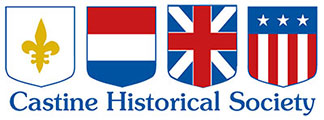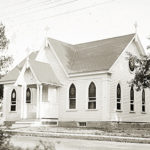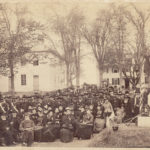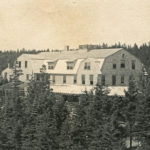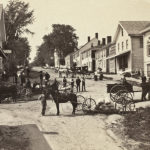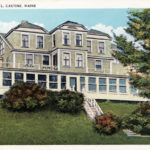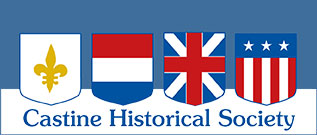Nineteenth Century Extra
Following the end of the Civil War, Castine’s days as a leading commercial and fishing center were coming to a close. The advent of railroads and steamboats made it possible for products and people to move faster than ever before. By the 1880s and 1890s the fishing vessels that had once occupied the town’s wharves were replaced by steamboats carrying tourists and summer visitors, sometimes called rusticators. Hotels with exotic names like Shetola, Acadia, and Dome of the Rock, were built to serve them. The Eastern Maine Normal School opened its doors in 1867, sending hundreds of teachers to Maine’s public schools. One of its original buildings still stands on the campus of the present-day Maine Maritime Academy. In 1897 an Episcopal chapel was built to serve many of the summer visitors, and later in 1921 the Roman Catholic chapel was consecrated, in part to serve the needs of the many servants brought by the visitors. Castine was enjoying a second era of prosperity that would last until the First World War.
By the 1920s, with the arrival of the internal combustion engine, more and more Americans now moved by automobile, fewer by railroad or steamboat. This affected tourism in Castine, and many of the great hotels of the 1880s and 1890s shut down or were torn down. Only three seasonal hotels remain.
- Catholic Church
- Monument Dedication
- Dome of the Rock Hotel
- Lower Main Street
- Castine Customs House
- Hancock County Map
- Shetola Hotel
- Old Rope Walk
